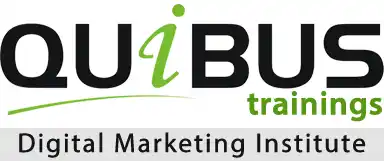Traditional marketing refers to the pre-digital ways of advertising a product or service, like print advertisements, billboards, radio and television commercials, and telemarketing. Digital marketing, in contrast, hand, is the promotion of a product or service using digital channels, like search engines, social networking sites, email, and websites. Traditional marketing continues to play a part in the marketing mix. Still, digital marketing has grown more vital in the digital era as more customers use the Internet to research and make purchases.
In this post, we will learn about traditional marketing vs digital marketing. Let’s start.
Top 10 Differences Between Traditional Marketing and Digital Marketing
| Traditional Marketing | Digital Marketing |
|---|---|
| Reaches a limited audience | Reaches a global audience |
| More expensive | Less expensive |
| Relies on print, television, and radio advertising | Relies on digital channels such as social media, email, and search engines |
| Limited targeting options | Advanced targeting options based on demographics, interests, and behavior |
| Limited ability to track and measure results | Advanced analytics and tracking capabilities to measure ROI |
| Often one-way communication | Often interactive and two-way communication |
| Limited ability to personalize messages | Advanced personalization options based on data and customer behavior |
| Limited ability to test and optimize campaigns | Advanced testing and optimization capabilities |
| Limited ability to engage with customers in real-time | Real-time engagement and communication through digital channels |
| Limited ability to scale campaigns | Ability to easily scale campaigns through digital channels |
Now that we have a general idea about traditional vs digital marketing let’s dig deeper into both marketing types.
What is Digital Marketing?
Now, let’s learn about digital marketing when comparing traditional and digital marketing.
Digital marketing is promoting a product or service using digital channels, like search results, social networking sites, display and search ads, emails, and websites. Moreover, it involves creating and publishing material like text, photographs, videos, and audio to reach and engage prospective consumers. Further, Digital marketing seeks to improve brand recognition, create leads, and drive sales.
Some of the techniques involved in digital marketing include Search Engine Optimization, Social Media Ads, Google Ads, Social Media Marketing, Email Marketing, etc. Let’s have a brief idea of these techniques below:
Pros of Digital Marketing
1. Cost Effective
When comparing the difference between traditional and digital marketing, the most important benefit is cost-effectiveness. Digital marketing is far more cost-effective than conventional marketing techniques. Further, it enables firms to reach a broader audience without spending a fortune on advertising.
2. Targeted Marketing
Digital marketing enables firms to target certain demographics and customer segments, enhancing their efforts’ efficacy.
3. Measurable Outcomes
When comparing traditional marketing vs digital marketing, digital marketing delivers quantitative outcomes. So this enables firms to monitor the effectiveness of their efforts and make necessary modifications.
4. Flexibility
Digital marketing is adaptable and can be altered rapidly to shifting market conditions. Moreover, it helps organizations try different strategies and methods to determine which performs best.
5. Global Reach
Among the major difference between marketing and digital marketing is the reach that both these marketing types offer. Digital marketing enables firms to access a worldwide audience, which is crucial for small enterprises needing more means to sell themselves locally.
6. Better Engagement
Digital marketing enables the company to increase customer awareness and gain recognition from more individuals. Moreover, a proper promotional plan incorporating blogs, social media material, and promotional offers enables the business to capture consumers’ attention and establish trust. So this is a major con when comparing traditional marketing vs digital marketing.
7. Increased Conversion Rates
The digital marketing process establishes a smooth and quick interaction with prospective consumers. As a result, it allows them to make a transaction on your website with only a few clicks. Moreover, this increases the likelihood of a transaction in connection to marketing activities.
When comparing traditional marketing vs digital marketing, improved conversions may not always work with traditional marketing.
8. Brand Growth
Brand owners and businesses must engage in digital marketing to establish and maintain their brand image. When deciding which products to purchase, customers consider a brand’s reputation and loyalty. Digital marketing contributes to a brand’s growth via several direct campaigns and personalized strategies.
Further, this method increases customer engagement by allowing them to see the brand’s unique selling proposition and value.
Cons of Digital Marketing
1. Continually Increasing Competition
In digital marketing, there is excessive competition. Everyone globally uses digital marketing platforms to publicize and promote their products and services. Moreover, capturing the attention of customers takes a lot of work. Techniques quickly become outdated. Thus it is important to adjust swiftly to customer needs.
2. Privacy Concerns
A major difference between traditional marketing vs digital marketing difference is privacy issues. Digital marketing depends on collecting and using client data, which might create privacy issues for certain customers. Further, they might be reluctant to share their details, discouraging them from completing any transaction online.
3. Technology Dependence
Digital marketing depends significantly on technology, which may be a disadvantage for organizations that lack technological expertise.
4. Constant Evolution
The major difference between e-marketing and traditional marketing is that the landscape of e-marketing is constantly evolving. Furthermore, the rapid growth of digital marketing makes it tough for organizations to stay up with the most recent trends and tools. Also, there is a constant need to upskill the staff to carry out these techniques.
5. Digital Marketing Needs Digital Skills
The individual responsible for the campaign should have extensive knowledge of many digital marketing platforms. It is easy to become digitally effective, but a digital marketer must have years of solid expertise to be successful. Tools and trends are always evolving, so it is essential to stay current.
6. Feedback and Complaints
It is challenging to give customer service through the Internet. If a customer posts a negative review, the whole public will view it. Further, it will affect the advertising and credibility of the brand. Moreover, it is among the major drawbacks of traditional marketing vs digital marketing.
Some Popular Ways to Do Digital Marketing
Below are some popular ways to do digital marketing:
- Search Engine Optimization (SEO): Search Engine Optimization (SEO) is the process of enhancing a website’s visibility in search engine results pages (SERPs) for certain keywords.
- PPC: Pay-per-click (PPC) advertising is the practice of running ads on search engines and paying only when individual clicks on them.
- Social Media Marketing: Social media marketing is creating and managing social media accounts and campaigns to engage consumers and promote a brand.
- Content Marketing: Content marketing is the process of creating and distributing quality content, such as blog entries, videos, and infographics, to attract and retain clients.
- Email Marketing: Email Marketing refers to sending targeted, tailored emails to a subscriber list to advertise goods and services.
- Video Marketing: Video marketing is creating and distributing promotional videos on sites such as YouTube and Social Media Platforms.
If You wish to learn how digital marketing can help you make a career or grow a business then You can enroll in our digital marketing course in Jaipur.
What is Traditional Marketing?
The next part of traditional marketing vs digital marketing is traditional marketing.
Traditional marketing refers to using traditional advertising means to advertise goods or services, like television, radio, newspapers, and magazines. These strategies have been employed for years and are regarded as the most tried-and-true advertising techniques. In addition to billboards, direct mail, and telemarketing, other conventional marketing includes outdoor advertising, direct mail, and telemarketing.
These strategies are frequently employed to reach a large audience, although they may be more costly than newer kinds of marketing, like digital marketing.
Pros of Traditional Marketing
When comparing traditional marketing vs digital marketing, let’s have a look at the pros and cons of traditional marketing:
1. Makes targeting local audience easier
When your company reaches out through local newspapers, journals, or radio, it may quickly reach prospective clients within a certain geography and demographic. Further, postal flyers may also be useful for targeting certain zip codes.
2. Something tangible in the hands
The major pro of traditional marketing vs digital marketing is that customers can have something physical with traditional marketing. At times, the online ad may disappear when refreshing the feed. Yet, your audience may grasp a piece of advertising (flyers, advertisements, coupons) or giveaways such as pens, hats, and t-shirts. So such things may remind them about you.
3. Better understanding and easy accessibility
When comparing the difference between traditional marketing and online marketing, the major striking pro is that traditional marketing may appeal to the generations who aren’t tech-savvy. It is commercial and promotional content is readily understood by the public. No platform or medium needs to access such ads since a piece of paper does the work.
Cons of Traditional Marketing
When discussing traditional marketing vs digital marketing, let’s have a look at the cons of traditional marketing:
1. Cost
Traditional marketing techniques may be expensive, especially in contrast to digital marketing techniques.
2. Effectiveness
Traditional marketing techniques are less effective than digital marketing techniques in targeting particular demographics or geographic regions.
3. Not data analysis
Traditional marketing approaches do not give the same amount of information for analysis and measurement as digital marketing strategies.
4. No customer engagement
Traditional marketing techniques provide less interaction than digital marketing techniques, making it more difficult for customers to connect with brands.
Some Popular Ways to Do Traditional Marketing
Here are some ways to consider for Traditional Marketing:
- Print Advertising: This includes newspapers, magazines, and direct mail advertisements.
- Television and Radio Advertising: Television and radio advertisements, such as commercials and infomercials.
- Outdoor Advertising: Outdoor advertising is the placement of billboards, signage, and banners in public locations.
- Trade Shows and Exhibitions involve displaying items or services at industry-specific gatherings.
- Public Relations: This comprises press releases, media outreach, and activities that aim to generate good press coverage for a company or product.
- Cold Calling refers to contacting prospective consumers over the phone to sell items or services.
- Direct Mail: Direct Mail is mailing promotional materials straight to prospective clients.
- Telemarketing: Telemarketing involves contacting prospective clients to sell items or services.
- Event Marketing: Event marketing involves planning promotional events like product launches, networking gatherings, and seminars.
Digital Marketing vs Traditional Marketing – Which one is better for you?
It ultimately relies on the nature of your company and your intended audience. As mentioned above, traditional and digital marketing have their benefits and drawbacks. Consider your business’s target demographic, budget, and overall marketing objectives when deciding which marketing style will be most effective. It may be advantageous to combine traditional and digital marketing strategies to accomplish your objectives and reach a larger audience.
Conclusion
Now that we know the differences between traditional marketing and digital marketing, it’s your take on what to choose for marketing. Both these techniques are effective. Yet, you must keep an eye out when running any campaign. Review your KPIs to ensure that you are hitting those. Also, measure the ROI to get an idea about the effectiveness of your campaigns.
Frequently Asked Questions
The primary distinction between digital and conventional marketing is the channel via which an audience receives promotional messages. Digital marketing employs digital channels such as social media and websites. However, traditional marketing utilizes traditional media like magazines and newspapers.
Traditional marketing may be more successful at reaching a bigger audience, but digital marketing is often more cost-efficient and may be more focused. When choosing a marketing strategy, it is important to think about your budget and intended audience.
Digital Marketing is cost-effecting, and easy to get started, you can track conversions, get customer data, run targeted ads, and be active on social media. Yet, traditional media requires more budget and chances are there your target audience may not encounter with your ads.





